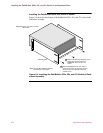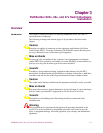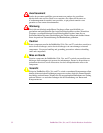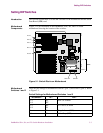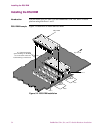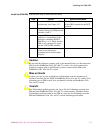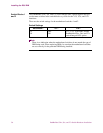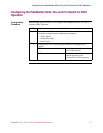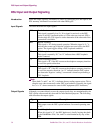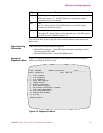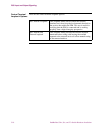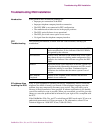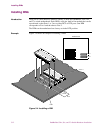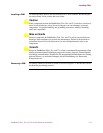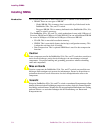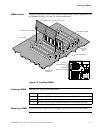
3-8 PathBuilder S24x, 26x, and 27x Switch Hardware Installation
DSU Input and Output Signaling
DSU Input and Output Signaling
Introduction Input and output signaling information is useful as a debugging tool and replaces the
EIA summary information associated with other DIM types.
Input Signals This table describes the input signals.
Note
When both C+ and C- are “H”, it indicates that no sealing current exists. This is
often the case when connected to other DSU type hardware. Normally, the signal
for C+ is “L” when connected to central office equipment (OCU hardware).
Output Signals Although you cannot directly access the output signals, they are manipulated by the
DSU option software and may be useful for informational purposes. The following
table describes the output signals.
NIS Not In Service
This signal is normally low (L). If no signal is received, or the DSU
option is in DSU Loopback mode, or if idle codes are received, NIS is
listed as high (H). This signal is used to determine if the other end of the
connection is available.
BPV Bipolar Violation
This signal is “H” during normal operation. When the signal is “L,” it
indicates that some type of bipolar violation was received by the DSU
option. The signal toggles during a DSU loopback condition.
DL DSU Loopback
This signal is normally “H.” An “L” indicates that a DSU loopback
mode is entered.
C+ Positive Sealing Current*
This signal is “H” if the DC current on the telephone company interface
is not in the positive direction.
C- Negative Sealing Current*
This signal is “H” if the DC current on the telephone company interface
is not in the negative direction. An “L” indicates that the DSU option
has detected a negative “sealing” current and is therefore performing a
CSU loopback.
Signal Description
RS Reset
This output resets the DSU option hardware. Its normal operating state
is “H”.
LL Local Loopback
When this signal is “L”, the DSU hardware is locally looping data back
to the PathBuilder S24x, 26x, and 27x switch hardware by way of the
EIM.



